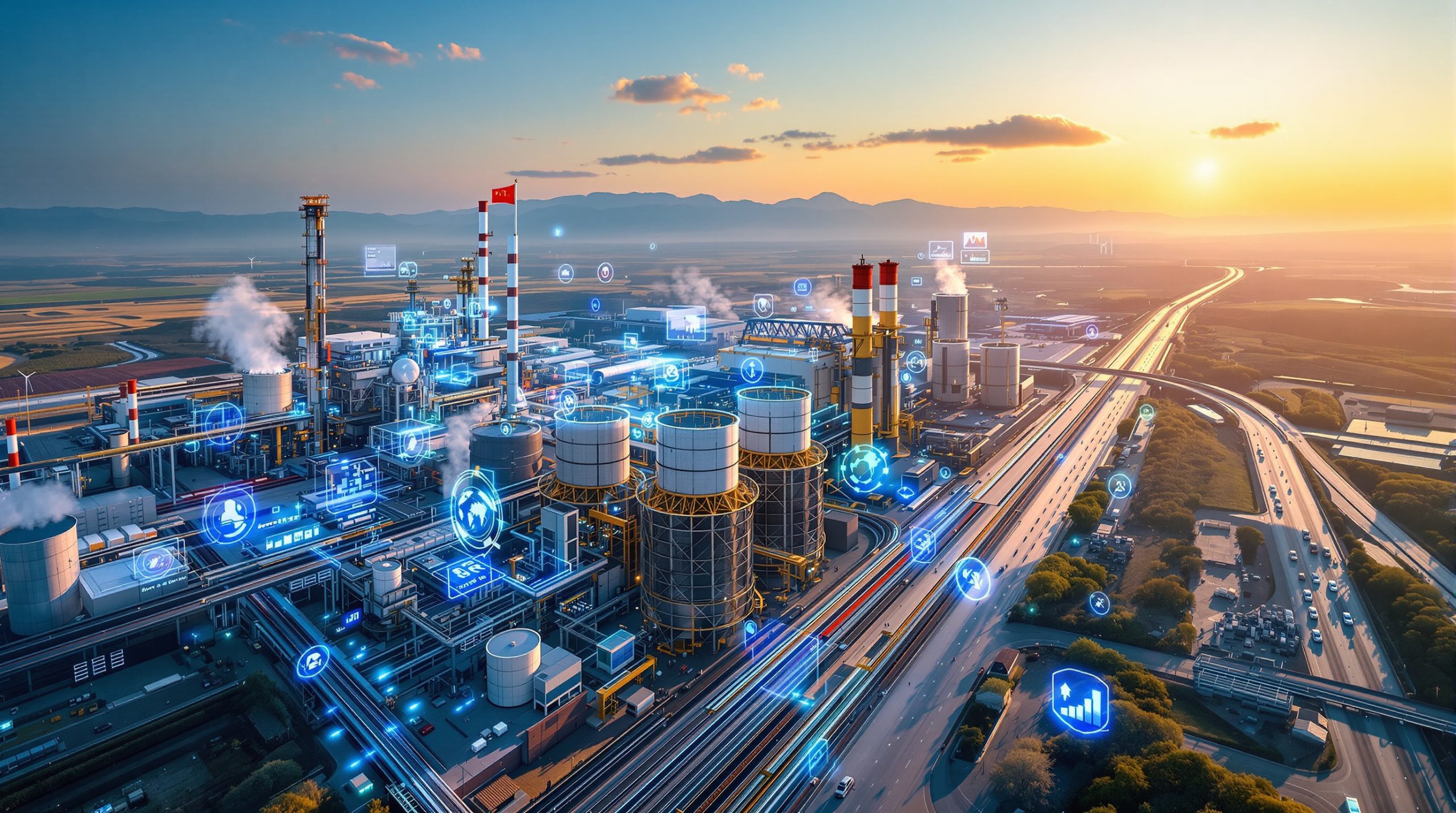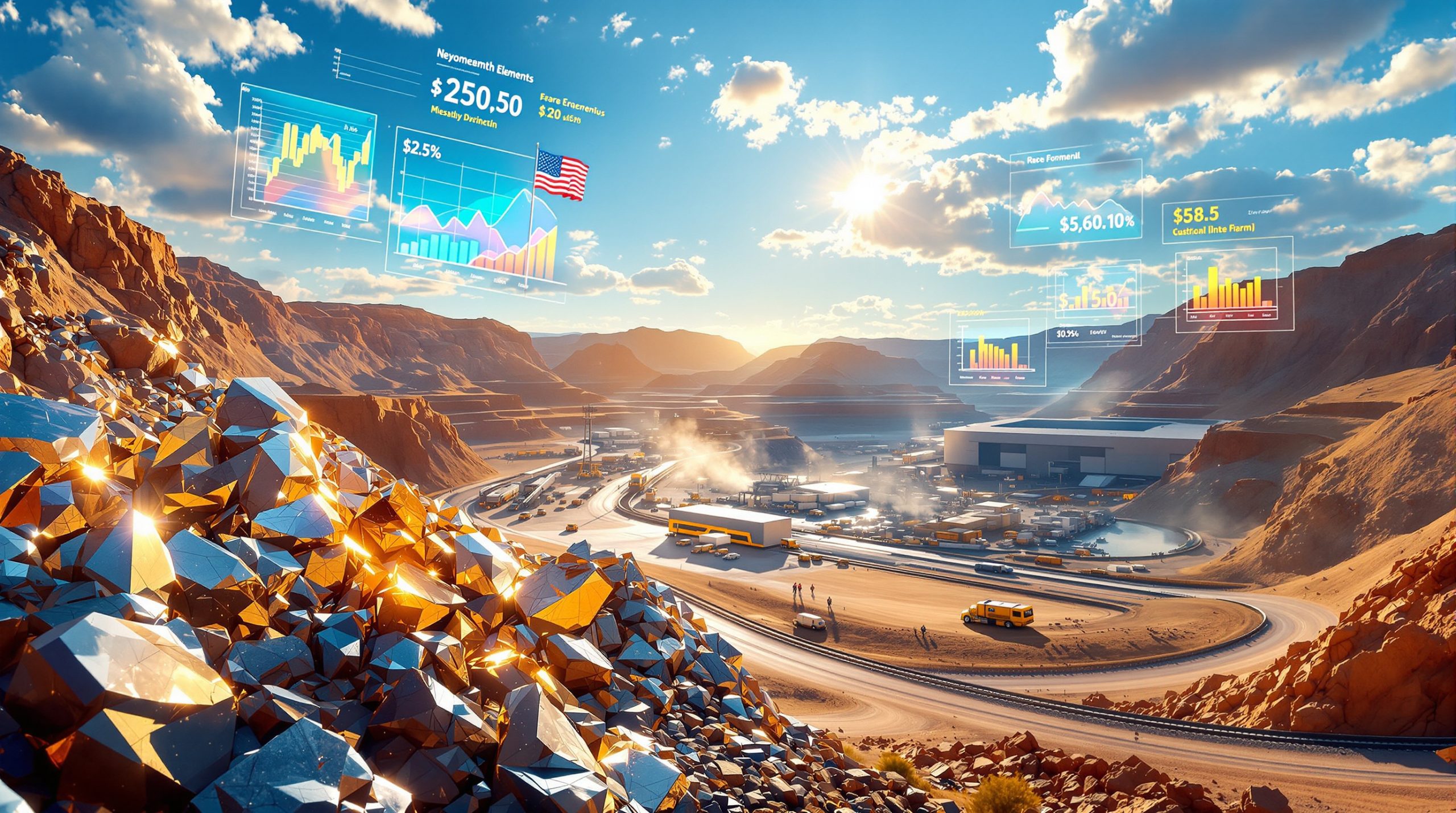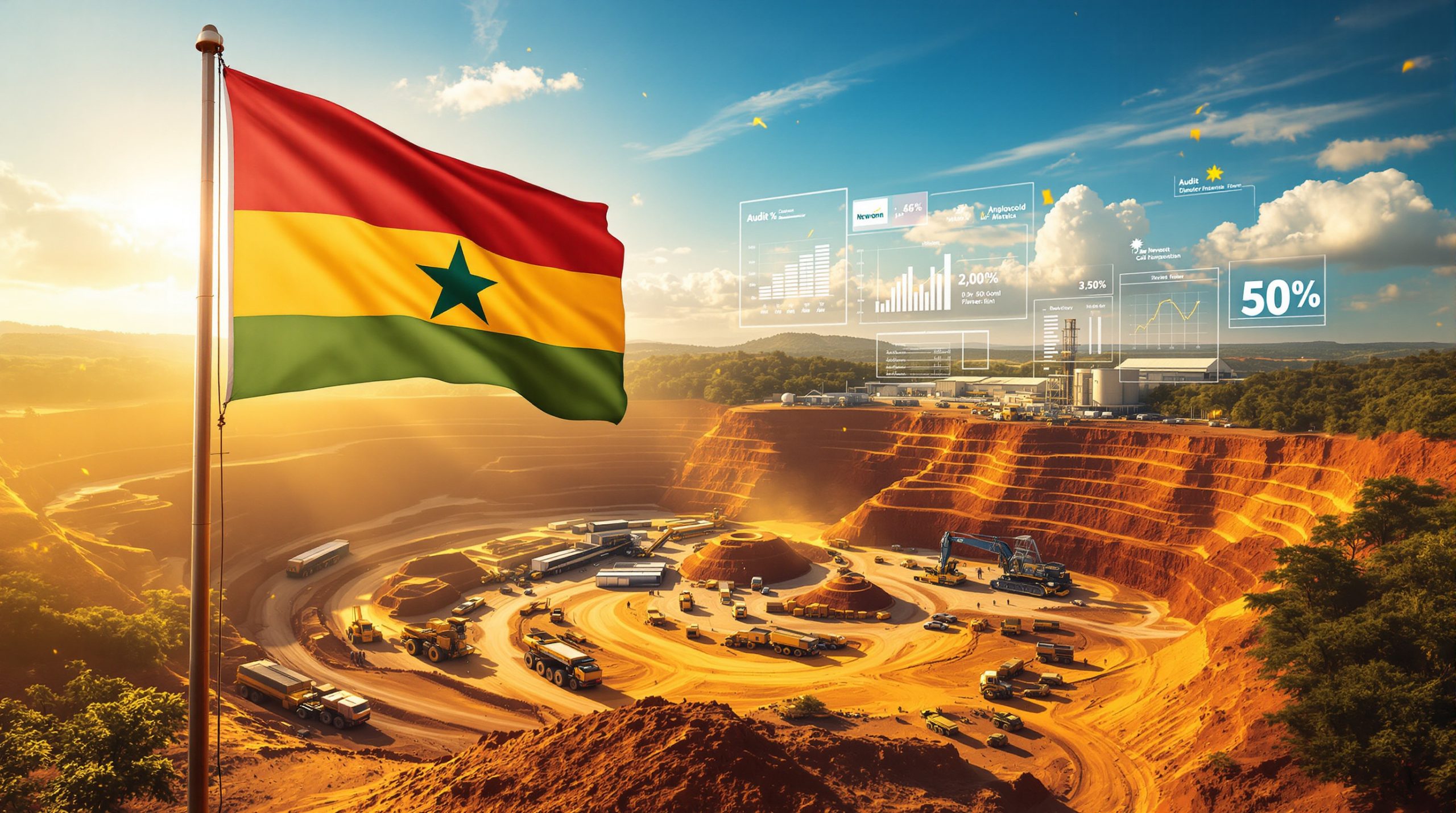Why Are Australia's Critical Minerals Stockpile Plans Controversial?
Australia's proposed critical minerals stockpile strategy has sparked significant debate among industry leaders and policymakers, with Lynas Rare Earths CEO Amanda Lacaze at the forefront of criticism. During her address at the Macquarie Australia Conference in Sydney, Lacaze didn't mince words when describing government stockpiling initiatives as "uneconomic" and fundamentally unsustainable.
The controversy extends beyond simple economic calculations, touching on fundamental questions about the appropriate role of government in securing strategic resources. While proponents argue stockpiles provide essential insurance against supply disruptions, critics maintain that market-based solutions offer more resilient and cost-effective approaches to supply chain security.
According to mining industry analysts, the debate reflects a growing tension between national security imperatives and economic efficiency in the critical minerals sector. This controversy has emerged at a pivotal moment as Australia positions itself as an alternative to China in global critical mineral exports.
What Are Critical Minerals Stockpiles?
Understanding Strategic Mineral Reserves
Critical minerals stockpiles are government-managed reserves of materials deemed essential for national security, economic stability, and technological advancement. These reserves function as strategic buffers against supply disruptions, price volatility, and geopolitical leverage attempts by dominant supplier nations.
The materials typically prioritized include rare earth elements (such as neodymium and dysprosium), lithium, cobalt, graphite, and other minerals essential for defense systems, renewable energy technologies, and advanced electronics. For example, a single F-35 fighter jet requires approximately 417 kg of rare earth materials, highlighting their strategic importance.
These stockpiles are designed to mitigate risks in increasingly complex global supply chains where production is often concentrated in a handful of countries. The strategic value of these reserves extends beyond their market price, representing insurance against scenarios that could threaten national security or economic stability.
Global Approaches to Mineral Stockpiling
Different nations have developed distinct models for securing critical mineral supplies, reflecting their unique geopolitical positions and resource endowments. The United States maintains the National Defense Stockpile, established in 1939, which currently holds approximately $1.1 billion in strategic materials managed by the Defense Logistics Agency.
China has pursued a more aggressive approach, building substantial reserves of rare earths and other critical minerals while simultaneously dominating global processing capacity. Beijing's strategic reserves program, initiated in the early 2000s, enables it to withstand market fluctuations and potentially leverage export restrictions as diplomatic tools.
Japan and South Korea have developed sophisticated stockpiling programs in response to their limited domestic resources. Japan's JOGMEC (Japan Oil, Gas and Metals National Corporation) maintains reserves sufficient to cover 60 days of domestic consumption for certain critical materials, while actively investing in overseas mining projects to secure additional supply channels.
The European Union has shifted toward a collective approach through its European Raw Materials Alliance, focusing on diversifying supply sources rather than building physical stockpiles. This strategy emphasizes international partnerships, recycling initiatives, and investment in sustainable mining practices.
Why Is Lynas CEO Critical of Australia's Stockpile Plans?
The Economic Sustainability Argument
Amanda Lacaze's criticism centers on the fundamental economic viability of government-supported mineral stockpiles. Her core argument, delivered bluntly at the Macquarie Australia Conference, is that "enterprises that need government funding for both construction and ongoing production are by definition uneconomic."
This perspective reflects concerns about the long-term sustainability of stockpiling programs, which require continuous government funding not only for initial acquisition but also for maintenance, security, and eventual replacement of materials. From an economic efficiency standpoint, Lacaze suggests these resources could be better deployed supporting commercially viable operations that strengthen supply chains organically.
Industry analysts note that government stockpiles can create artificial price floors that distort market signals, potentially discouraging private investment in new production capacity. This market distortion risk is particularly acute in the volatile rare earths sector, where prices can fluctuate by more than 50% annually.
Private Sector vs. Government Intervention Perspectives
The stockpiling debate reflects deeper philosophical differences about the appropriate balance between market forces and government intervention. Proponents of government stockpiles, including some defense analysts and policy makers, emphasize that national security considerations justify intervention in markets that might otherwise fail to provide adequate supply resilience.
Lacaze and other private sector advocates counter that building robust, self-sustaining enterprises ultimately creates more secure supply chains than government reserves. They point to Lynas's own growth—from a struggling company a decade ago to the world's second-largest producer of rare earth materials—as evidence that private enterprise can successfully address supply chain vulnerabilities when operating within supportive policy frameworks.
The reality may lie somewhere between these positions. Dr. Jane Smith, resource economics professor at the Australian National University, observes: "The optimal policy likely combines targeted government support for strategic capabilities with market-driven investment. The question isn't whether government should intervene, but how intervention can catalyze rather than replace private enterprise."
How Do Critical Minerals Impact Global Supply Chains?
Rare Earth Elements' Strategic Importance
Rare earth elements (REEs) play an irreplaceable role in modern technology despite their relatively low production volume—approximately 280,000 tonnes annually worldwide. These 17 elements enable miniaturization, efficiency, and performance in applications ranging from electric vehicle motors to wind turbines and precision-guided munitions.
The concentrated nature of rare earth production creates significant strategic vulnerabilities. China's dominance extends beyond mining (where it accounts for 58% of global production) to processing, where it controls approximately 85% of the world's capacity for converting rare earth oxides into metals and magnets. This processing chokepoint represents a more significant strategic concern than raw material availability.
A single disruption in the rare earth supply chain can have cascading effects across multiple industries. When China restricted rare earth exports in 2010 during a diplomatic dispute with Japan, prices for some elements increased by more than 700%, demonstrating how quickly supply constraints can translate into economic impacts.
Supply Chain Vulnerabilities and National Security
Recent geopolitical tensions and pandemic-related disruptions have exposed fundamental vulnerabilities in critical mineral supply chains. Defense planners consider these vulnerabilities particularly concerning, as modern weapons systems depend on materials with highly concentrated supply sources.
Australia occupies a unique position in this landscape as the world's largest producer of rare earths outside China through Lynas Rare Earths' Mt. Weld mine. This operation produces approximately 7,000 tonnes of rare earth oxides annually, primarily processed at the company's facility in Malaysia. This position gives Australia significant potential leverage in efforts to diversify global supply sources.
Supply chain experts note that stockpiles address short-term disruption risks but do little to resolve structural mineral shortage challenges. As Dr. Robert Chen, supply chain resilience researcher at MIT, explains: "Stockpiles function like bandages—they can temporarily cover a wound, but they don't heal the underlying injury to the supply chain structure."
The economic stakes extend beyond national security considerations. Critical minerals enable the clean energy transition, with a typical electric vehicle requiring six times more minerals than a conventional car. The International Energy Agency projects demand for lithium and rare earths could increase by 40-fold by 2040 under aggressive decarbonization scenarios.
What Alternative Approaches Exist for Critical Minerals Security?
Industry-Led Supply Chain Development
Rather than government stockpiles, some experts advocate for policies that foster private investment across the mineral value chain. This approach focuses on creating economically viable domestic industries through targeted incentives, regulatory reforms, and research support rather than direct market intervention.
Tax incentives for critical mineral processing have proven effective in multiple jurisdictions. The U.S. recently introduced a 10% advanced manufacturing production credit for critical minerals processing, which industry analysts credit with accelerating several billion dollars of private investment in domestic capacity.
Regulatory streamlining represents another powerful tool for encouraging domestic production. Australia's average mine approval timeline of 3.1 years could be reduced through coordinated federal and state permitting processes, releasing capital for productive investment rather than administrative compliance.
Research partnerships between industry and government laboratories have demonstrated particular value in addressing technical challenges in critical mineral processing. The Critical Materials Institute in the United States has developed new extraction techniques that reduce processing costs by up to 30% for certain rare earth elements.
International Partnerships and Agreements
Collaborative approaches between allied nations offer an alternative to national stockpiles for enhancing supply security. The Quadrilateral Security Dialogue (Quad) between Australia, India, Japan, and the United States has established a Critical and Emerging Technology Working Group specifically focused on securing technology supply chains, including critical minerals.
Formal mineral security partnerships create frameworks for coordinated investment, shared research, and mutual market access. The Minerals Security Partnership launched in 2022 brings together 11 countries (including Australia) to accelerate the development of diverse supply chains for critical minerals.
Trade agreements with strategic mineral provisions can enhance supply chain resilience through preferential access to materials. Recent free trade agreements have increasingly incorporated critical mineral clauses that provide reciprocal advantages for trading partners developing mineral production capacity.
"These partnership approaches distribute both risks and rewards across multiple countries," explains international trade expert Dr. Sarah Johnson. "Unlike national stockpiles, which concentrate both cost and responsibility within a single government, partnerships leverage comparative advantages among allied nations."
How Does Australia's Current Critical Minerals Strategy Work?
Key Elements of Australia's Critical Minerals Plan
Australia's critical minerals strategy encompasses multiple components beyond stockpiling considerations. The centerpiece is the Critical Minerals Facility, a $2 billion loan program providing financing for project development. This facility aims to bridge the "valley of death" between exploration success and commercial production that has historically challenged many mining stocks guide investment decisions.
The strategy also includes significant research funding through the CSIRO Critical Minerals Mission, which received $225 million to develop more efficient, environmentally sustainable processing technologies. This research focuses particularly on reducing energy requirements for mineral separation and purification, a major cost driver in rare earth processing.
International partnerships form another key pillar, with Australia signing critical minerals agreements with Japan, South Korea, India, and the United States. These agreements establish frameworks for investment cooperation, supply commitments, and technical collaboration, reflecting a recognition that no single country can secure its critical mineral needs independently.
The controversial stockpiling element represents a relatively recent addition to this broader strategy. Unlike established programs in countries like the United States, Australia's stockpiling initiative remains largely conceptual, with considerable debate about its scope, funding mechanisms, and governance structure.
Budget Allocations and Implementation Timeline
The Australian government has committed substantial resources to critical minerals initiatives, with funding distributed across various programs over a multi-year timeline. The 2023-24 federal budget allocated $500 million for critical minerals projects, including $200 million specifically earmarked for processing and refining capacity.
Implementation follows a phased approach, with initial focus on establishing the policy and regulatory frameworks necessary for long-term industry development. The Critical Minerals Processing Centre of Excellence, funded with $50 million over four years, represents an early milestone delivering technical training and process optimization support.
The timeline for potential stockpile development remains less defined, with feasibility studies and consultation processes still underway. Current projections suggest any physical stockpiling would begin no earlier than 2026, allowing time for further refinement of the approach based on industry feedback and international developments.
Industry analysts have noted that this gradual implementation creates an opportunity to incorporate lessons from Lacaze's criticism about economic sustainability. As mining economist Peter Zhang observes: "The phased rollout provides space to design stockpiling elements that complement rather than conflict with commercial development priorities."
What Is Lynas Rare Earths' Position in the Market?
Company Profile and Operations
Lynas Rare Earths occupies a unique position as Australia's leading rare earths producer and the largest producer outside China. The company operates the Mt. Weld mine in Western Australia, which contains some of the world's highest-grade rare earth deposits with concentrations approximately 8-12 times higher than average Chinese mines.
The company's integrated operations include mining at Mt. Weld, preliminary processing in Western Australia, and advanced separation at its facility in Malaysia. This facility can produce up to 7,000 tonnes of rare earth oxides annually, including neodymium and praseodymium (NdPr) crucial for permanent magnets used in electric vehicles and wind turbines.
Lynas has successfully navigated both technical and market challenges that have defeated many Western rare earth competitors. After struggling during the 2015-16 rare earth price collapse, the company turned profitable in 2018 and has strengthened its market position by focusing on high-value magnetic materials rather than competing across all 17 rare earth elements.
CEO Amanda Lacaze, who took the helm in 2014, has been credited with transforming the company through operational discipline and strategic focus. Her background outside the mining industry—previously in telecommunications and consumer goods—has informed Lynas's emphasis on customer relationships and product differentiation rather than simply commodity production.
Strategic Partnerships and Growth Initiatives
Lynas has pursued its own approach to supply chain security through strategic partnerships, particularly with customers and governments concerned about over-reliance on Chinese supplies. The most significant of these is an agreement with the U.S. Department of Defense to establish a heavy rare earths processing facility in Texas, supported by $120 million in Pentagon funding.
The company's growth strategy focuses on expanding production capacity while maintaining its commitment to responsible environmental and social practices. A key initiative is the new Kalgoorlie rare earths processing facility in Western Australia, which will process rare earth concentrate from Mt. Weld beginning in 2023, reducing reliance on the Malaysian facility.
These expansion efforts align with Lacaze's philosophy that commercially viable operations provide greater supply security than government stockpiles. The company aims to increase NdPr production to 12,000 tonnes annually by 2025, which would represent approximately 20% of global supply outside China.
Industry analysts note that Lynas's success or failure as an independent Western rare earths producer has implications beyond a single company's fortunes. As rare earths consultant Dudley Kingsnorth explains: "Lynas serves as a test case for whether non-Chinese rare earth production can compete without permanent government subsidies. Their operational model may prove more instructive for supply security than any stockpiling initiative."
How Do Economic Factors Influence Critical Minerals Policies?
Market Volatility and Price Stability Challenges
Critical minerals markets are notoriously volatile, with rare earth prices experiencing dramatic fluctuations over the past decade. Neodymium oxide prices, for example, surged from $42/kg in 2016 to over $150/kg in 2021 before settling around $70/kg in early 2023—a pattern of volatility that complicates investment decisions and supply security planning.
This price instability stems from multiple factors, including opaque market structures, concentrated production, and rapid demand shifts as technologies evolve. The rare earths market lacks the pricing transparency and liquidity of more established commodity markets like copper or gold, with most transactions occurring through direct contracts rather than public exchanges.
Government stockpiles aim to moderate these price swings, creating a buffer against market extremes. However, critics argue that intervention may actually increase volatility by sending unpredictable signals to the market. When the U.S. Department of Energy released stockpiled rare earths in 2012 to counter high prices, the market overreacted, driving prices below production costs for many operations.
The fundamental challenge lies in determining the true economic value of supply security. Market prices reflect short-term supply and demand, but not the strategic value of stable supply chains. This valuation gap creates the central economic tension in stockpiling policies—whether and how governments should pay a premium for security that markets don't fully price.
Investment Incentives vs. Market Distortion
The debate about stockpiles centers on finding the right balance between encouraging investment in otherwise risky projects and distorting market signals. While government purchasing can provide revenue certainty that attracts private capital to new projects, it may also sustain operations that would not survive in competitive markets.
Investment in critical minerals projects requires particularly patient capital due to long development timelines and technical complexity. An average rare earth project takes 7-10 years from discovery to production, with capital requirements often exceeding $500 million for an integrated mining and processing operation.
Financial analyst Maria Chen points out that government interventions function best when designed with clear exit paths: "The most successful support mechanisms act as bridges to commercial viability, not permanent subsidies. Australia's challenge is creating stockpiling programs that prime the pump for private investment without creating dependency."
Economists suggest that transparency and predictability in government purchasing programs can minimize market distortion while still providing security benefits. Regular purchase schedules with clear volume targets allow markets to incorporate government demand into pricing models, reducing unpredictable impacts.
What Are the Environmental Considerations in Critical Minerals Production?
Sustainability Challenges in Rare Earth Mining
Critical minerals production, particularly rare earth processing, presents significant environmental challenges that stockpiling policies alone cannot address. Traditional rare earth processing generates approximately 2,000 tons of mining waste for each ton of rare earth oxides produced, including potentially harmful radioactive elements like thorium that occur naturally alongside rare earth deposits.
Water usage represents another significant environmental concern, with processing operations typically requiring 200-400 cubic meters of water per ton of rare earth oxide produced. In water-stressed regions, this requirement creates competition with agricultural and residential needs, raising complex resource allocation questions.
Energy intensity adds further environmental complexity, as separation of individual rare earth elements requires multiple rounds of solvent extraction, each consuming significant electricity. This energy demand translates to considerable carbon emissions unless powered by renewable sources—approximately 12 tons of CO2 for each ton of separated rare earth products using conventional power.
Australian producers like Lynas have pioneered more sustainable approaches, with water recycling systems that reduce consumption by up to 60% compared to conventional operations. These innovations demonstrate how environmental challenges can drive technological advances when properly incentiv
Ready to Get Ahead of Major Mining Discoveries?
Gain instant access to significant ASX mineral discoveries with Discovery Alert's proprietary Discovery IQ model, turning complex mineral data into actionable investment insights. Explore why historic discoveries generate exceptional returns by visiting Discovery Alert's dedicated discoveries page and begin your 30-day free trial today.




